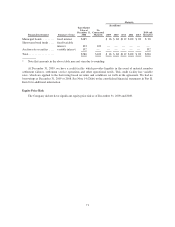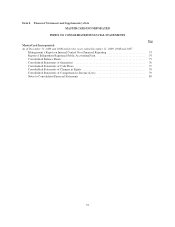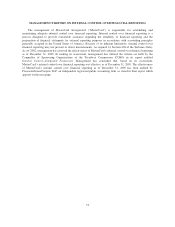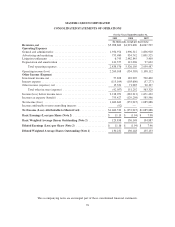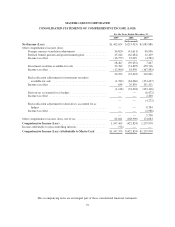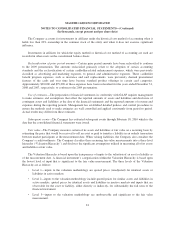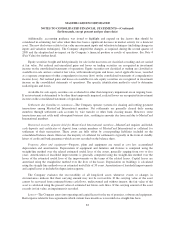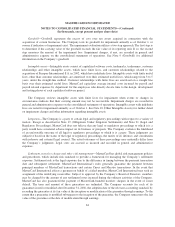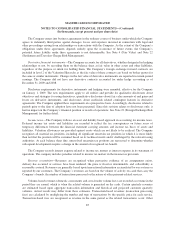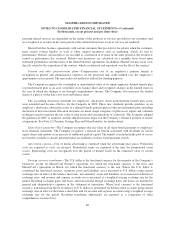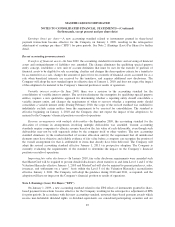MasterCard 2009 Annual Report Download - page 91
Download and view the complete annual report
Please find page 91 of the 2009 MasterCard annual report below. You can navigate through the pages in the report by either clicking on the pages listed below, or by using the keyword search tool below to find specific information within the annual report.MASTERCARD INCORPORATED
NOTES TO CONSOLIDATED FINANCIAL STATEMENTS—(Continued)
(In thousands, except percent and per share data)
The Company accounts for investments in affiliates under the historical cost method of accounting when it
holds less than 20% ownership in the common stock of the entity and when it does not exercise significant
influence.
Investments in affiliates for which the equity method or historical cost method of accounting are used are
recorded in other assets on the consolidated balance sheets.
Reclassification of prior period amounts—Certain prior period amounts have been reclassified to conform
to the 2009 presentation. The amounts reclassified primarily relate to the adoption of certain accounting
standards and the reclassification of certain cardholder-related enhancement expenses, which were previously
classified as advertising and marketing expenses, to general and administrative expenses. These cardholder
benefit program expenses, such as insurance and card replacements, were previously deemed promotional
features of the cards and over time have become standard product offerings in certain card categories.
Approximately $83,000 and $79,000 of these expenses have been reclassified for the years ended December 31,
2008 and 2007, respectively, to conform to the 2009 presentation.
Use of estimates—The preparation of financial statements in conformity with GAAP requires management
to make estimates and assumptions that affect the reported amounts of assets and liabilities and disclosure of
contingent assets and liabilities at the date of the financial statements and the reported amounts of revenue and
expenses during the reporting periods. Management has established detailed policies and control procedures to
ensure the methods used to make estimates are well controlled and applied consistently from period to period.
Actual results may differ from these estimates.
Subsequent events—The Company has evaluated subsequent events through February 18, 2010 which is the
date that the consolidated financial statements were issued.
Fair value—The Company measures certain of its assets and liabilities at fair value on a recurring basis by
estimating the price that would be received to sell an asset or paid to transfer a liability in an orderly transaction
between market participants at the measurement date. When valuing liabilities, the Company also considers the
Company’s creditworthiness. The Company classifies these recurring fair value measurements into a three-level
hierarchy (“Valuation Hierarchy”) and discloses the significant assumptions utilized in measuring all of its assets
and liabilities at fair value.
The Valuation Hierarchy is based upon the transparency of inputs to the valuation of an asset or liability as
of the measurement date. A financial instrument’s categorization within the Valuation Hierarchy is based upon
the lowest level of input that is significant to the fair value measurement. The three levels of the Valuation
Hierarchy are as follows:
• Level 1—inputs to the valuation methodology are quoted prices (unadjusted) for identical assets or
liabilities in active markets.
• Level 2—inputs to the valuation methodology include quoted prices for similar assets and liabilities in
active markets, quoted prices for identical assets and liabilities in inactive markets and inputs that are
observable for the asset or liability, either directly or indirectly, for substantially the full term of the
financial instrument.
• Level 3—inputs to the valuation methodology are unobservable and significant to the fair value
measurement.
81


